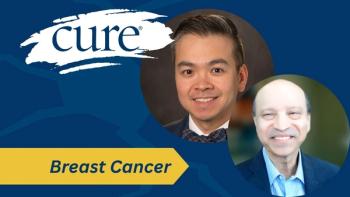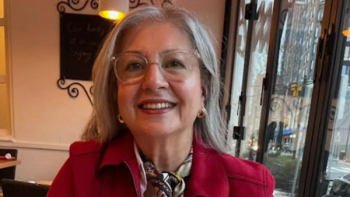
Drugs That Target Tumor Blood Vessels in Lung Cancer
Transcript:Edward S. Kim, MD: For decades, we used 2-drug chemotherapy—that’s how we treated the majority of our lung cancer patients. Over time, we’ve tried many times to see if we can add more benefit to a 2-drug regimen. This has resulted in more failures than successes, but one of the key successes that occurred by adding a third drug to a 2-drug regimen was with bevacizumab (Avastin). This data was presented and published in the New England Journal of Medicine. It was considered one of the first breakthroughs, in the early 2000s, where adding Avastin to chemotherapy improved overall survival for patients with nonsquamous, non—small cell lung cancer. So why Avastin? What is it?
Avastin is one of those drugs classified as a VEGF (vascular endothelial growth factor), but it is an angiogenesis-targeted drug. What is angiogenesis? This is where these types of drugs attack blood vessels and they inhibit or stop blood vessels from growing. So you could see, if you were a scientist and were studying different drugs in your lab, that a drug that stops blood vessel growth may be effective in tumors because we don’t want tumors to continue to grow or new blood vessels to grow and spread and do those bad things. So, these types of drugs (this class of drugs), was developed to specifically see about inhibiting, stopping, or killing tumors. And in lung cancer, this was the first trial that demonstrated improved survival by adding Avastin, again one of these angiogenesis inhibitors, to chemotherapy. There are some additional side effects that occur and some precautions. So, any time you add a therapy, there’s always going to be some sort of pavement along the way of having to deal with different side effects. But for the most part, if managed well and if the appropriate patients are treated with Avastin, again, there seems to be very good tolerability and, definitely, increased survival. Having used it personally many times, I think this drug definitely, in an era before precision medicine had really occurred, was a very big step in the right direction versus traditional doublet chemotherapy.
Mark A. Socinski, MD: Angiogenesis, or growth of blood vessels, is a critical part of tumor biology. How does the tumor gain access to the blood supply? It needs a blood supply for oxygen and nutrients. It has a mechanism so that it can secrete proteins that will stimulate normal blood vessels to grow into the tumor. It’s almost like healing a wound. It’s the same mechanisms that you use if you cut yourself and you heal that wound—angiogenesis occurs. And this is a mechanism that the tumors use, again, to get a blood supply and get oxygen and nutrients. It’s part of the metastatic process—the ability of cancers to spread through the bloodstream and those sort of things.
So, knowing the importance of blood vessel formation for cancers, and understanding how they do that, has created a number of targets to various components of that pathway. A drug like bevacizumab targets those secreted proteins from the tumor that’s causing the normal blood vessels to grow. Those things are blocked by bevacizumab. When those are secreted, they work through a receptor on normal blood vessel cells that stimulate the blood vessel cells to grow. We also have another antibody, called ramucirumab, that inhibits those receptors on the normal blood vessel cells. So understanding the mechanism of how tumors do this has really allowed us to create some therapeutic approaches that we didn’t have more than a decade or so ago.
Transcript Edited for Clarity




